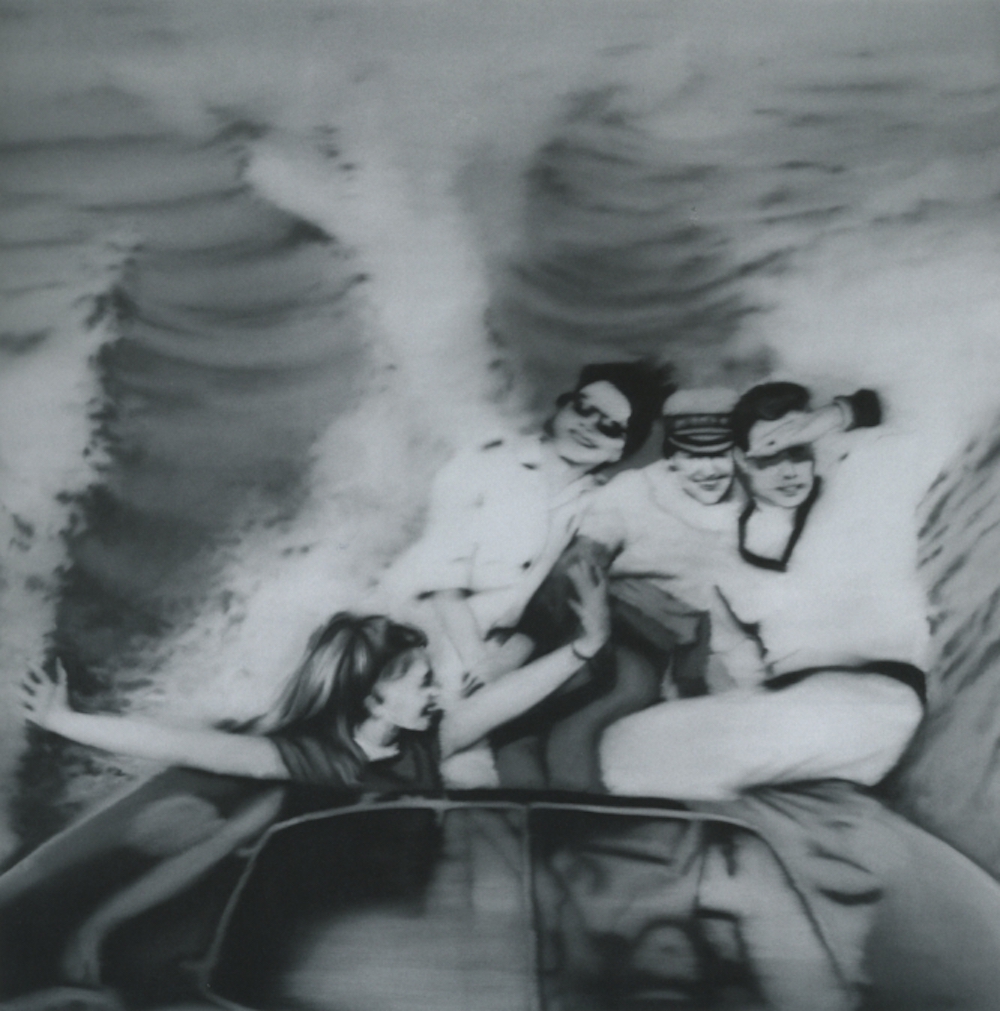Interlude - Gerhard Richter at Kunstmuseum Basel
Gerhard Richter made a series of oil paintings based on photographs in the 1960s. They’re among his most famous works, which is quite an achievement, considering his is a career of both extreme achievement and length. One of the finest is Motorboot (Motor Boat), from 1965, in the permanent collection at the Kunstmuseum in Basel.
The artist used source material ranging from popular magazines to his own family photo albums. He painted them at a time of an economic boom, with Germany (the West, at least), aiming to leave behind the dark past and enjoy a brighter life of travel, new leisure pursuits and an ever-increasing range of consumer goods to buy.
As an artist, Richter’s antipathy to consumerism is deeply conventional for his time. Consider Pop Art’s insistent focus on the sinister potential of the mass-produced physical relics of commercial culture, which saw Richter’s compatriot Sigmar Polke painstakingly painting the Ben-day dots that form images on cheap newsprint.

Richter ramps up the dread still further in his photo pieces. The scene shown in Motorboot is blown up and decontextualised from the original - an advertising photograph to promote a new Kodak camera.
The joyful poses of the boat riders, borne across choppy water at great speed, arms outstretched and wrapped around each other, are slightly elongated and distorted. Even contorted, distressed, El Greco-style. Spookier still, the washed out colours mean the white clothing of three of the riders is indistinguishable from the white waves behind them. It’s as if they’ve instantiated from the water itself. And the upping of the colour contrast makes their lips black and their teeth extra white, turning grins into grimaces. It’s a small masterpiece of distilled horror, a candidate for the Cursed Images subreddit, and you certainly don’t want to buy a camera as a result of looking at it.
Given the awesome buying power of the museum in which it’s housed - in super-luxe Basel, the city of the eight euro fridge magnet and the five euro salad bag - the curators are able put a similarly famous work of Pop darkness right in the same room: Andy Warhol’s Black and White Disaster #4 (5 Deaths 17 Times in Black and White), a serigraph where a black-and-white photo of a gruesome car crash is reproduced, over and over, in a grid. It’s an echo, a suggestion of where this doomed speedboat is going to end up.
This sinister room, visited a couple of years ago, floated back into my mind this week for some reason. Maybe because both artists were to be on show in major exhibitions this spring: Warhol at Tate Modern in London, Richter at Marian Goodman in New York.
While I can’t visit them of course, I can watch these virtually in online slideshows and documentaries. I was intrigued by this meditation on the German master, from art historian Susan Tallman, who helped clarify my thinking on Motorboot.
She says: “His stylistic tics—the hazy edges, overlaying, chopping into pieces, and reconfiguring of parts—are visual reminders that you are not seeing everything, that availability to the eye is no guarantee of clarity. The story always changes with the telling. Uncertainty is truth.”
Motorboot is in the permanent collection at the Kunstmuseum Basel